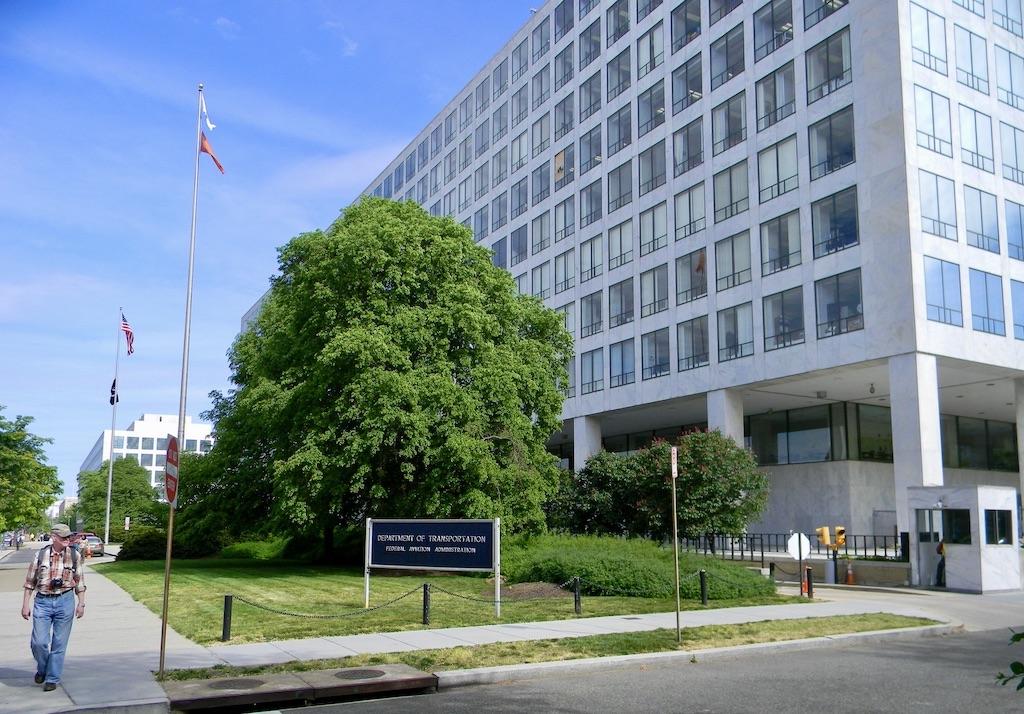
FAA headquarters in Washington, D.C.
The FAA Reauthorization Act of 2024, signed into law on May 16, 2024, amounts to nearly 1,000 pages and aims to address the aviation industry’s challenges and evolution, supported by $105 billion in funding over the next five years.
The last five-year FAA authorization occurred in 2018, and since its expiration last year, the FAA has been temporarily funded by Congress with stopgap solutions. In the years since its last authorization, the FAA has faced new challenges, requiring stable, long-term funding and clear directives from Congress to function effectively.
Commercial and private air travel continue to grow, straining existing resources and infrastructure. The development of new technologies, including advanced air mobility (AAM) and uncrewed aircraft systems (UAS), have highlighted gaps within existing law. Moreover, several high-profile safety incidents at airports have sparked public uncertainty around existing equipment and communications protocol. Likewise, the COVID-19 pandemic both exacerbated and exposed underlying issues within the aviation industry, most obviously through pilot, mechanic and air traffic control staffing shortages.
Congress addressed these demands in the latest reauthorization bill with numerous provisions aimed at modernizing airport infrastructure, enhancing the passenger experience, strengthening the aviation workforce, improving safety and streamlining FAA processes. Notably, the legislation includes the first-ever title, or section, dedicated solely to general aviation.
Significant portions of the legislation aim to clear backlogs at the FAA and ensure information transparency. Congress has authorized the FAA to use necessary channels to expedite approval of air carrier certificate applications under Part 135. Under the act, the FAA must aim for an average processing time of less than 60 days within one year and less than 30 days within two years. Additionally, the legislation mandates any such actions as necessary to eliminate the aircraft registration backlog at the Civil Aviation Registry, ensuring applications are processed within 10 business days on average.
The act also codifies recommendations from the Part 135 Rest and Duty Aviation Rulemaking Committee. Specifically, it instructs the FAA to promulgate rules to restrict the use of ferry flights beyond reasonable duty times and revise the policies and guidance on record-keeping for Part 135 operators.
The reauthorization also directs the Government Accountability Office to conduct a comprehensive review of the Pilot’s Bill of Rights. It further amends the Pilot’s Bill of Rights to ensure that individuals have at least 30 days to respond to a letter of investigation from the FAA after receipt. It similarly updates the Pilot’s Bill of Rights to require the FAA to provide timely notifications for those subject to a reexamination of an airman’s certificate.
To address privacy concerns, the act instructs the FAA to establish a process for private aircraft owners and operators to request their aircraft’s registration number and identifiable data be hidden from public dissemination for noncommercial flights, and to request withholding certain personal information from the Civil Aviation Registry website.
The act authorizes substantial funding for airport improvements, prioritizing investments in small and general aviation airports. It directs $200 million per fiscal year to replace the existing Airport Improvement Program supplemental initiative with a new discretionary grant program aimed at improving airport resilience.
The reauthorization empowers the FAA to create new standards for UAS operations. The act establishes a 20-month timeline during which the FAA must issue a notice of proposed rule-making and a final rule to establish a regulatory pathway for UAS to operate beyond the visual line of sight. The rule must denote acceptable levels of risk and standards for remote pilots, as well as create an approval process for associated elements of UAS. Moreover, the FAA must publish its risk assessment methodology to determine safe operations.
The act likewise instructs the FAA to establish procedures for approving third-party service suppliers to support the commercial operation of UAS and ensure their safe integration into the national airspace system in accordance with industry standards.
Workforce Measures
To address air traffic controller shortages and improve training, the act directs the FAA to implement healthier staffing standards and set maximum hiring targets, while increasing access to high-quality training with enhanced simulation systems. Additionally, it requires the FAA to update its staffing model to hire more safety inspectors and leverage its direct hire authority to fill key positions.
To further bolster the aviation workforce, the act expands the Aviation Workforce Development Grant Program with increased funding to $60 million per year through 2028 and creates a pilot program to provide veterans with pilot training.
Because a substantial portion of the act focuses on the creation of working groups, studies and new oversight mechanisms, many of the act’s changes are unlikely to have an immediate impact on the aviation industry. However, the act’s acknowledgement of the industry’s evolving nature and renewed focus on industry directives will foster further innovation, understanding and comprehensive solutions within the FAA.
The industry owes special thanks to Rep. Sam Graves (R-Mo.), chairman of the House Transportation and Infrastructure Committee. Graves is a dedicated general aviation pilot and advocate, and he quietly led the bill through the House and worked with the Senate to make the act a reality.
And for this article, I owe special thanks to Brittan Harrell at Jetlaw for her congressional experience and insight.





